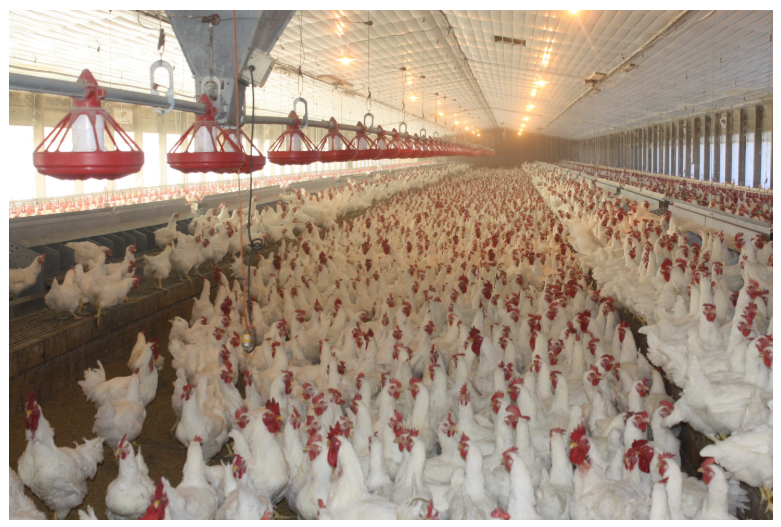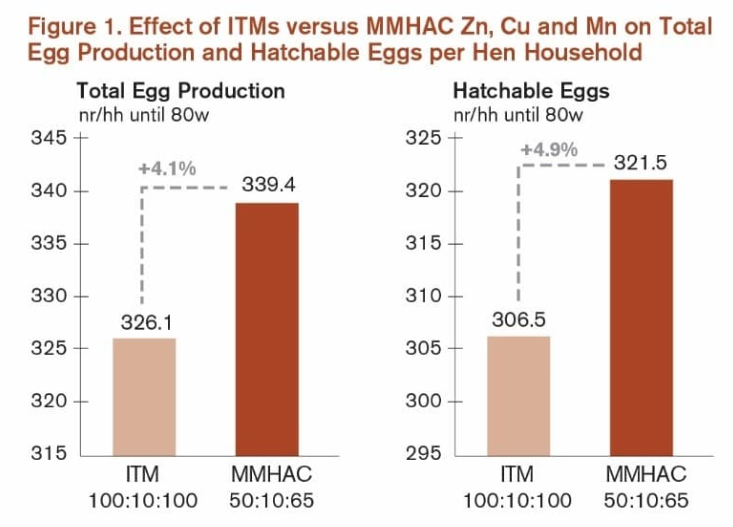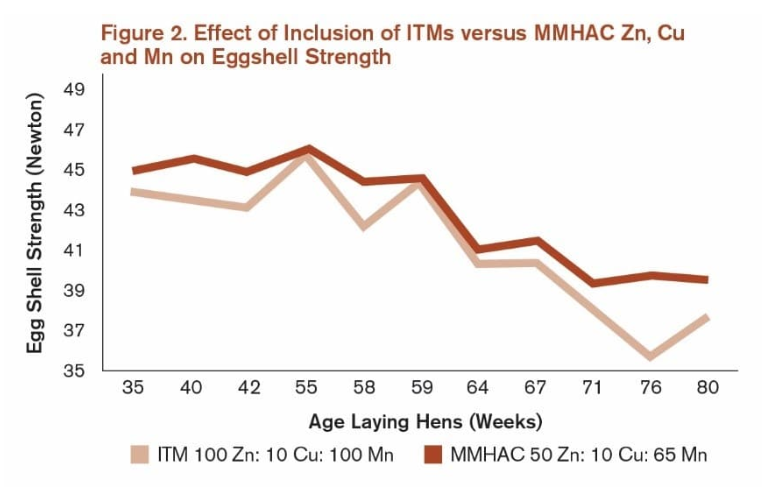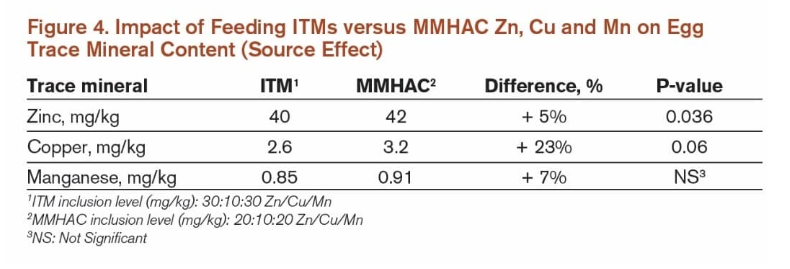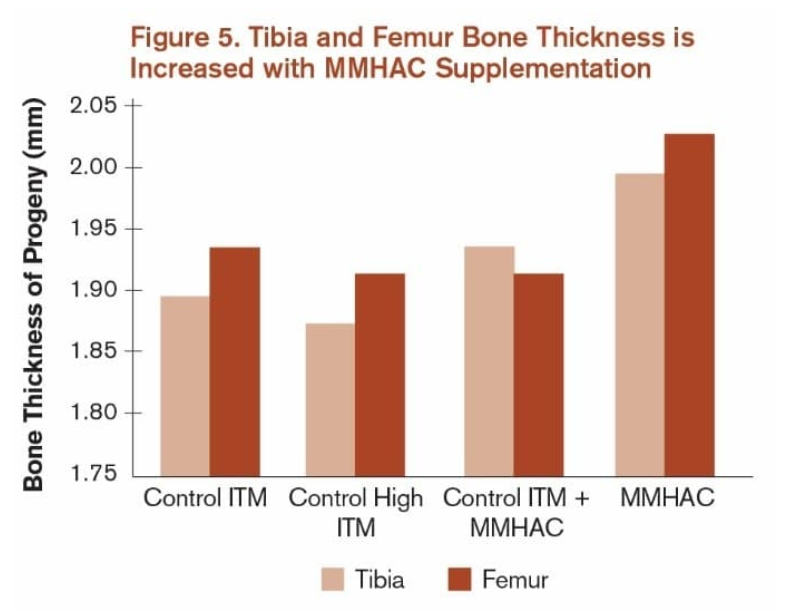



Why trace mineral supplements are pivotal for breeder efficiency
Genetic selection has dramatically increased the performance of broiler and layer breeders, which also increased the overall demand for supplemental nutrients in dietsBy Dr Ajay Bhoyar, Senior Manager, Global Poultry Marketing, Novus International, Inc
Subsequently, nutritionists have the responsibility to ensure the health and productivity of the flock in addition to the quality of the egg and resulting chick. Trace minerals such as zinc, copper and manganese are essential to ensure adequate performance of the animal. They function both as enzyme cofactors and as constituents of metalloenzymes.
Zinc is a constituent or activator of hundreds of enzymes and is essential for many aspects of growth, including DNA synthesis. Zinc also has an integral role in the synthesis of two important function proteins, collagen and keratin. These proteins have a large impact in embryonic and post-natal development. Collagen is the major structural protein of internal tissues, including cartilage and bone. Keratin is the structural protein of feathers, skin, beak and claws. Zinc also influences chick development because of its effect on appetite. A deficiency or excess of zinc is associated with anorexia.
Copper is essential for reproduction and embryonic development and plays an important role in the proper crosslinking of collagen and elastin. Manganese is also essential for growth and fertility. It is crucial for embryonic and post-natal bone development of the growing chick.
When considering eggshell formation and integrity, zinc, copper and manganese are all important components for a strong shell. A zinc deficiency can lead to reduced shell weight and strength, as it is involved in supplying carbonate ions during shell formation. As shell membrane fibers are distributed, a lack of copper can result in egg-shape deformation and abnormal mechanical properties. Additionally, manganese activates an enzyme involved in the creation of glycosaminoglycans, which are components of proteoglycans. The proteoglycans are present in the eggshell matrix and are involved in the control of its structure and texture.
Zinc, copper and manganese play a role, either individually or in combination, in supporting growth, production and maintain the structural integrity of tissues. Therefore, supplementing hens with highly bioavailable chelated sources of trace minerals will support not only the quality of eggs from breeder hens, but also hatching rate and progeny quality.
Increased bioavailability of trace minerals could translate into improved performance, tissue development and integrity; as seen with improved eggshell breaking strength, hatchability, embryo development and chick quality; as well as enhanced immune response to vaccination and growth performance reflected by improved growth and feed conversion. The increased bioavailability of chelated trace minerals is attributable to reduced antagonistic reactions with other dietary constituents in the gastrointestinal tract. Use of a chelated trace mineral source, such as a metal methionine hydroxy analogue chelate (MMHAC), allows nutritionists to reduce the trace mineral content of the feed, while still meeting the animal’s nutritional requirements and improving key production parameters.
Egg production, eggshell strength and hatchability
Research conducted with layer breeder producers in commercial conditions showed dramatic improvements in key production parameters for hens fed MMHAC. In one study, a 4.1 percent increase in total egg production per housed hen and a 4.9 percent increase in hatchable eggs per housed hen resulted with the inclusion of MMHAC in the diet rather than inorganic trace mineral (ITM) sources of zinc, copper and manganese (Figure 1). Additionally, a consistent improvement in eggshell strength was seen in those layer breeder hens fed MMHAC over the 80-week period of the trial (Figure 2).
These results support replacing standard ITMs with MMHAC at lower supplementation levels to promote improved performance and stronger eggshells over the lay period, especially after 60 weeks of age when production begins to decrease.
Additional research was done with 15,200 heavy breeders, which compared results from the inclusion of trace minerals as either MMHAC or a sulfate/oxide combination. For birds fed MMHAC, the percentage of embryos alive at 18 days was improved and hatching rate increased by 2 percent at 36 weeks of age (Figure 3).
Embryo Development
It’s important to realise that embryos develop outside the hen’s body. Therefore, mineral content in the egg yolk is crucial for optimum embryo development and progeny growth. In one research trial, the inorganic source of zinc, copper and manganese was replaced with the corresponding MMHAC at a reduced level, and the mineral content of the egg yolks was measured (Figure 4).
This trial demonstrates commercial producers can improve embryo development by improving the trace mineral supply to the embryo, while reducing the diet’s overall mineral content. Given the physiological impact of trace minerals, this can favor the resulting chick’s immunity development and livability. This relationship can be further assessed by measuring the extent of bone mineralisation in the day-old chick.
Chick Viability
In a trial conducted with broiler breeders, the birds received four different mineral treatments. Tibia and femur bone thickness were then measured of day-old chicks hatched from 33-week-old hens after 11 weeks on the diets (Figure 5).
While increasing the supply of inorganic sources of trace minerals had no effect on bone development, adding a low concentration of MMHAC to the control ITM resulted in a numerical increase in femur thickness. Conversely, when only a lower concentration of MMHAC was included in the diet, there was a significant (P < 0.05) increase in both tibia and femur thickness, which may result in improved chick viability.
To further support improved progeny growth performance by including MMHAC in the diet, a separate trial was conducted to analyse the growth performance of 42-day-old chicks from hens fed different sources of trace minerals. Hatched healthy male chicks were randomly selected and fed a common commercial ration with inorganic mineral sources. Upon analysis, feeding MMHAC to broiler breeders increased the body weight, feed intake and feed conversion of progeny at 42 days of age (Figure 6).
Summary
Trace minerals such as zinc, copper and manganese play an essential role in the maintenance of the health and productivity of the breeder bird. Supplementing breeder diets with Mintrex® chelated trace minerals (MMHAC) maximises egg production and hatchability up to 80 weeks of age when compared to other organic and inorganic mineral sources. Additionally, the inclusion of Mintrex in breeder diets supports increased mineral levels in the egg yolk, which then become available to the developing chick. As a result, the formation of key structural components, such as collagen and bone, is enhanced, as is the viability of the day-old chick. This additional nutritional support helps the chick to fully reach its genetic performance potential. The highly bioavailable forms of Mintrex achieve these effects at lower dietary concentrations than inorganic sources, thus reducing environmental impact and increasing profitability of breeder operations.







